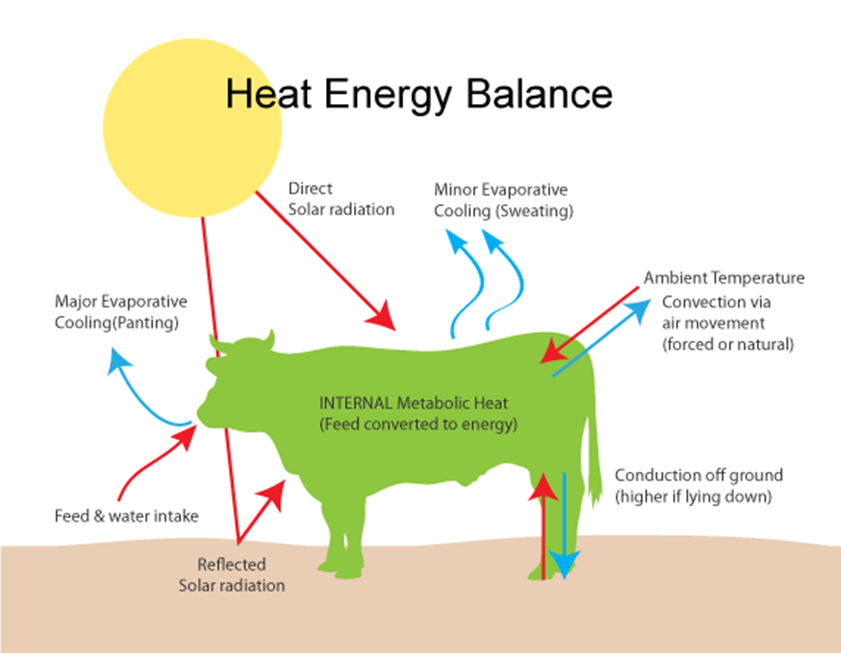What is heat load?
All animals have a need to maintain core body temperature within a small range so that body cells and tissues can function optimally. For humans the range is 36.5 to 37.5°C, for cattle it’s in the range of 37.9 – 40.2oC depending on the cattle breed/genotype. This range needs to be maintained even when additional heat is added to the system.
For animals in a feedlot, the conversion of food into energy (called metabolic heat) is the major source of heat being added to the system.
A problem occurs if heat accumulates beyond the animal's ability to dissipate it to the environment. In this situation, an animal will start to store heat, which we call a heat load.
It is important to understand the basic heat balance for animals in a feedlot to ensure appropriate mitigation strategies are implemented to reduce the risk of a heat load event. The mechanisms associated with heat gain and loss in cattle are illustrated below.

For cattle, evaporation is the major mechanism they use to dissipate heat. When the air is already holding a lot of moisture the rate of evaporation from cattle panting is reduced. Therefore cattle are more likely to gain heat if the conditions are humid.
